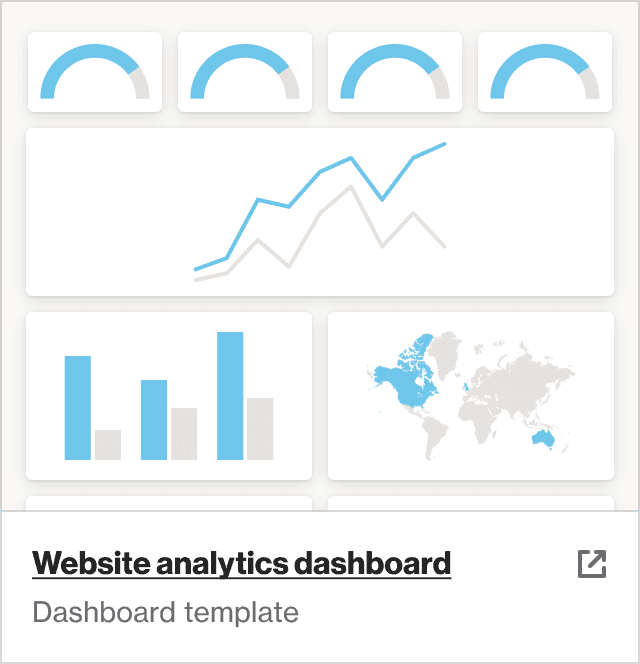All marketing activities come back to your website. It’s your homebase, the first place people go when they want more information about your product or service, and your best chance of making an impression.
Conversion rate optimization (CRO) is essential to making that website work as hard as it possibly can.
In this article, we explore:
What is conversion rate optimization (CRO)?
How to measure your website conversion rate
Step-by-step guide to CRO
Tips for optimizing your B2B website
What is conversion rate optimization?
A conversion is any desired action, like filling out a form, signing up for a free trial, or making a booking. The conversion rate on your website is the percentage of website visitors taking those actions. So if you're achieving a conversion rate of 10 percent on free trial signups, then 10 percent of your total traffic is taking a conversion action.
Conversion rate optimization is the process of making changes to your website to increase the percentage of users who take a conversion action on your website.
It benefits your business and your bottom line in more ways than one, helping you to:
Generate more revenue from organic traffic to reduce CAC
Optimize the visitor experience to improve brand perception and stickiness
Increase ROI on paid ads and other marketing activities
Improve customer retention and expansion
Better understand who your customer is and what they are looking for
Attract top-quality talent
Types of website conversions
A conversion happens when a website visitor takes a meaningful action — one that indicates they are interested in your brand and what you have to offer.
While a sales, subscription or signup is always the end goal (in other words, a revenue-producing conversion), there are several conversion actions that happen higher in the funnel — and they are just as important to track
Here are some examples of conversion actions might be:
Watching or interacting with a demo
Booking a 1:1 demo
Sending a pricing inquiry
Interacting with your live chat
Completing a form whether via a popup
Signing up for a free trial or paid plan
Downloading an app
Making a purchase
Booking a consultation or appointment
Make a list of the conversion actions that are important to your business, and ensure you can report on them to better understand the relationship between them.
Calculating your conversion rate
Tracking the effectiveness of optimizations requires you to understand the baseline. Only then can you see when things are improving or when you might need to roll back a change.
To do this, calculate the total number of conversions in a given time period, divide it by the total number of website visitors in the same time period, and multiply that number by 100 to get a percentage.
This gives you the total conversion rate for your website and a baseline from which to work from.
Other CRO metrics to track
If you want to generate deeper insights and pinpoint where optimizations need to be made, there are a number of other website metrics to your dashboard. Here are some of the most valuable:
1. Macro vs. micro conversions
Macro conversions are the end-goal — a sale, a signup, or booking. Micro conversions are all the smaller steps a visitor takes that comes before, including watching or interacting with a demo.
Monitoring both micro and macro conversions can help you get a better understanding of the overall customer journey, helping you to identify the strengths and weaknesses in your funnel.
2. Form conversions
In the list of example conversion activities above, around 75% include a form fill. If your forms are a blocker, your conversion rate is going to take a hit.
Monitoring the conversion rates on your forms, including embedded forms and popups, can help you identify which type of forms are more likely to convert. You might want to A/B test a few of your forms to see if removing a field, changing a CTA, or updating a button improves your conversion rate.
Remember, short forms create less friction, but reCAPTCHA and verification steps are important for weeding out spam. When comparing your forms, correct for spam to get the clearest understanding of the forms that are helping your business grow.
3. Bounce rate and page speed
Bounce rate tells you the percentage of unengaged sessions on your site. An unengaged session means the visitor did not trigger a conversion event, navigate to another page, or spend more than 10 seconds on your site.
A high bounce rate may indicate that your website is not meeting your visitor’s expectations, your load time is too slow, or your site is not optimized for mobile.
To troubleshoot a high bounce rate, track page speed to identify where your website performance may need improvements, and look at bounce rate by device and browser to identify any issues with responsiveness.
If your site speed or performance is not the issue, apply some filters to see whether the highest bounces are on a specific page or coming from a specific campaign or source and work to improve the pages or update the campaign messaging to better meet your visitor’s expectations.
4. Scroll depth and clicks
Scrolling and clicking are two leading indicators that a website page has grabbed your visitors' attention and that they want to learn more. They can help you identify weak pages and help you gauge which features or content is most engaging to your audience.
5. Average time on page
Similar to scroll depth, you want to see that people are spending time on your page reading or watching your content. Time on site will help tell you this - but it’s not always a case of more = better.
For example, landing pages should be optimized to quickly convey a message and convince an interested lead to take a conversion action — a long time on site with no conversion event could suggest your landing page is too long, confusing, or off-point.

Step-by-step guide to conversion rate optimization
Step one: Identify your conversion actions
Be clear on the micro and macro conversions you want to track, and where in the funnel they fall. Mapping this out and ensuring you can track each conversion will help you quickly generate insights to make optimization decisions.
Step two: Get your analytics in order and establish benchmarks
Build your dashboards before you start optimizing to ensure you have benchmarks that you can work to improve. Your benchmarks do not have to be set in stone at this point, they are just there to help you identify where optimizations are impacting results.
Step three: Map the visitor journey
Your data will start to tell you a story about your visitor journey, and you can use this in conjunction with tools like heat maps, visitor surveys or interviews, and usability testing to identify what brings people to your website, what keeps them there, the biggest conversion drivers, and any barriers that make them leave.
Step four: Generate insights
With data and soft research at your fingertips, you can start to generate insights on how your visitors are behaving now, and what you can do to steer them in the direction of a conversion.
Step five: Build and implement an action plan
By now you should have a good understanding of the optimizations you want to make to your website, forms, or campaigns. Build an action plan to identify which of these can be implemented right away, which require more research or a heavy design lift, and which should be A/B tested. This will help you to organize a workforce and will ensure that optimizations are rolling out one after another, enabling you to better track how each impacts (or doesn’t impact) your conversion rate.
Step six: Measure success and iterate on what’s working
With each optimization, watch your metrics and measure the impact. This should be happening regularly so that you can roll back any changes that have an instant negative impact, and iterate on those that have a positive impact.
If you go through a rebrand, major change in message, or change your offering, revisit this step-by-step process to optimize for conversions in the new world.
Five simple tips for conversion rate optimization
Ultimately you want the data to steer you in the right direction, but there is some low-hanging fruit most websites can benefit from.
1. Make your CTAs clear
If there’s one universal truth in CRO, it’s that a CTA should have a clear message, be placed in a prominent position, and in a color that pops. It’s common to show these buttons on the top right corner of pages, or in the middle and above the fold on homepages or landing pages.
Beyond that, you do want to find another way to nudge your visitors to conversion as they scroll and explore, but be mindful that a cluttered page with too many CTAs can actually lead to fewer conversions. Find a balance, experiment, and iterate on what works.
2. Test forms
Forms are a critical part of your lead generation and conversion process. To reduce friction, enable autofill or drop known users' data in, eliminate unnecessary fields, and turn fields into checkboxes or drop-down menus when possible. Also look at visibility and legibility — form, font, and button colors can play a role in conversions. While you’re doing this, ensure you have measures in place to stop spammy sign ups — reCAPTCHA and email or phone validation are great starting points.
3. Use social proof throughout your site
Social proof helps build trust and loyalty with your customers. Use testimonials, reviews from third-party sites like TrustRadius, quotes from social media posts, and case study results throughout your site.
4. Show when you can’t tell
Sharp, creative copy can do a great job of quickly communicating what your brand and product are about, and why you exist (i.e. the problem you solve). But once you get into the ‘how’, videos, interactive demos, and illustrations tend to be a better medium for communicating your message.
5. Put yourself in your visitor's shoes
Carve out time to put yourself in your customer's shoes. Use a new device or browser and search for something your customers might be looking for when they discover your brand. Once you land on your website, click around and interact with your site in the way a customer might and see where the website pulls you. You’ll be amazed at how many optimization ideas you generate from this simple activity.
Final word
Conversion rate optimization is not a hack to growth or a quick fix — it’s an ongoing process that requires dedicated time, research and thought. But when you get it right every other important business metric can be improved.



